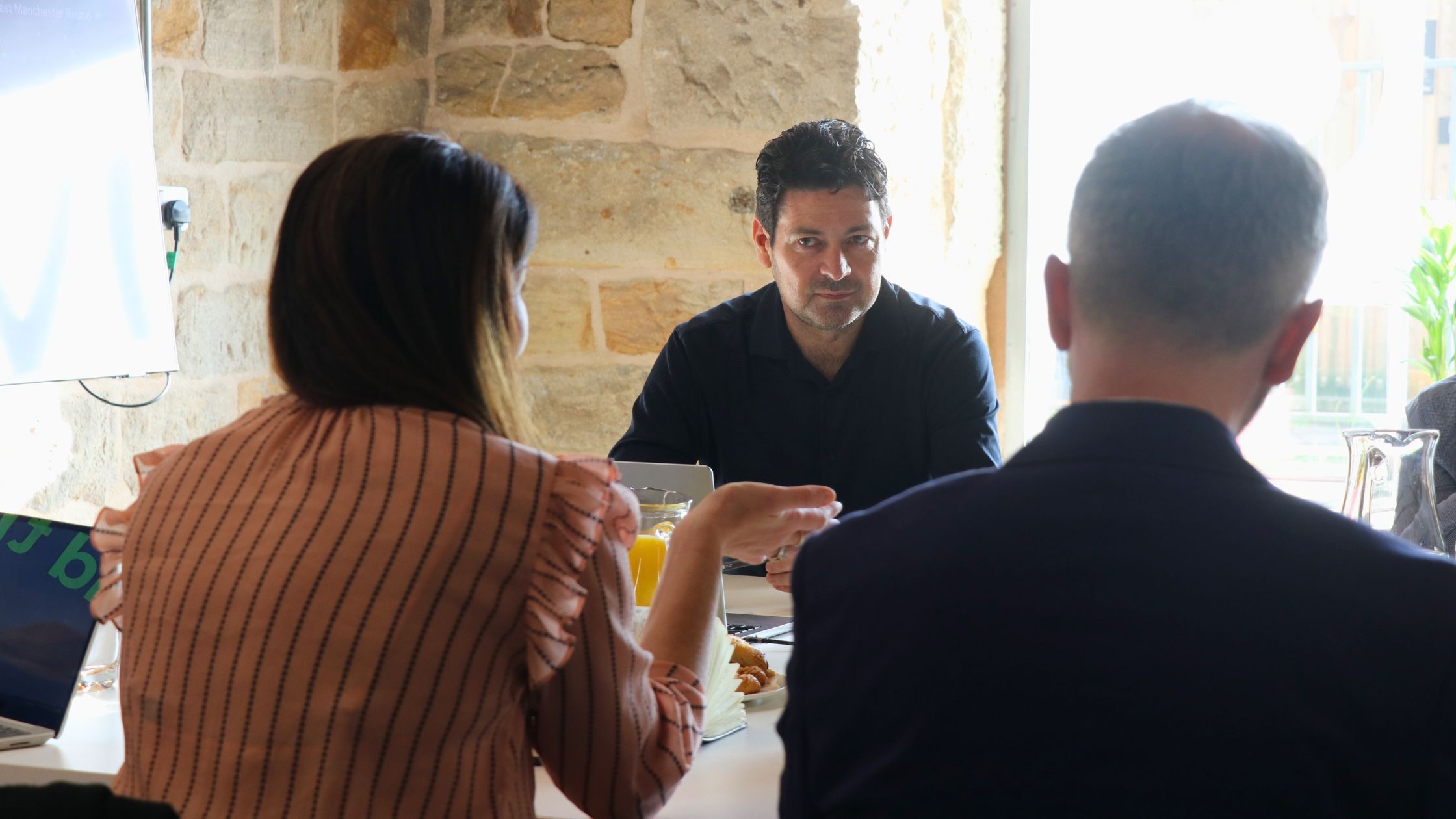Delivering Complexity at Scale: Insights from Civic’s Greater Manchester RoundTable on Systems Thinking in Action
In a city-region as ambitious and multifaceted as Greater Manchester, the challenges of urban transformation are immense, but so are the opportunities. A recent Civic Roundtable brought together leaders from across public and private sectors to discuss how systems thinking, long-term vision, and integrated partnerships are reshaping the region at scale. Chaired by the Chief Executive of Civic Stephen O’Malley, the roundtable included Richard Knight of Peel Land, Kim Grieveson of Avison Young, Ian Simpson of SimpsonHaugh, Max Bentham of Muse and Katrina Davies of Civic. From the regeneration of Strangeways to the future of Salford Quays, the discussion revealed the depth of collaboration and strategic clarity driving change.
Greater Manchester’s transformation is no longer confined to its city core. A coordinated, regional approach drives value across all ten boroughs, from Oldham to Wigan, Trafford to Rochdale. “GM is now pushing growth into areas like Atom Valley, the Wigan–Bolton corridor… the regeneration of those towns is what’s really needed to continue the current level of growth”, said Richard Knight, Director of Planning and Strategy at Peel Land. This strategic shift is backed by infrastructure, political alignment, and long-term planning frameworks across Greater Manchester. “You’re seeing GM having a real regional core that’s growing in multiple places… and it’s all part of one interconnected system,” Knight added.
Across the roundtable, a key message emerged: the most successful projects are those co-produced between public authorities and private partners, each bringing a unique local understanding, delivery experience, and flexibility. “The council had absolute clarity on what they wanted,” explained Max Bentham, Development Director at Muse Developments, reflecting on Muse’s partnership work with Oldham. “We brought new ideas and showed we understood the geography, the people, and the challenges. We’re not just parachuting in a solution,” Beatham added. “It’s about making investments stick that will benefit the existing community.”

In regenerative areas like Strangeways, this approach is being tested at scale, balancing land-use change, social need, and climate resilience in a politically sensitive footprint “It’s a complex site with multiple ownerships, overlapping interests, and significant flood modelling constraints,” noted Kim Grieveson, Principal at Avison Young. “And yet that’s where the opportunity lies, it could be achievable if you take a systems-based view and structure delivery around what’s viable, desirable and long-term.”
At a time when short-term returns can dominate the conversation, Greater Manchester is taking the long view. “We relish the complexity,” said Stephen O’Malley, Chief Executive of Civic. “The hardest places are the ones most worth getting right. It’s not just technical excellence, it’s understanding people, nature, geography, finance and climate as one interwoven system.” That multi-dimensional thinking is why Greater Manchester is setting the bar for post-industrial city-regions.
A narrative emerging from the roundtable is that Greater Manchester is leveraging its mayoral structure, shared spatial frameworks, and data-led investment strategy to de-risk development and increase impact. “This is why we’re in this space,” said O’Malley. “Not because it’s simple, but because these places matter. The value lies in their complexity.” And for investors, that means predictable leadership, visible pipelines, and a track record of cross-sector delivery.
For the founding partner of SimpsonHaugh Ian Simpson, the success of urban regeneration hinges on one fundamental principle: people drive place. Infrastructure, services, and amenities don’t lead, but follow the population. “We need people. Nothing works without people,” he emphasised. “You can’t open a restaurant or a GP surgery without footfall. That’s why what Manchester is doing works, it’s buzzing now, and demand keeps growing.” The city’s resurgence wasn’t just architectural; it was social and demographic. A deliberate strategy to repopulate the urban core that will, in turn, spill out into the surrounding boroughs. That growth has unlocked viability for new schools, health centres, leisure, and culture, creating a virtuous cycle that continues to attract new residents, businesses, and investors alike.

The conversation finalised on the importance of culture and how it is tightly interwoven into Greater Manchester’s story. As Stephen O’Malley noted, initiatives like the Manchester International Festival aren’t just artistic endeavours, but “statements of intent” that signal the city’s ambition on a global stage. Public investment in cultural assets, from The Lowry to the early formation of MediaCity, laid the groundwork for anchor institutions like the BBC to follow, catalysing private development and civic pride. Katrina Davis, Communications and Culture Director at Civic, highlighted how cultural activation can serve as the first move in long-term regeneration: “Massive Attack playing Mayfield wasn’t just a gig, it was the beginning of that whole story.” These projects created the foundations for commercial confidence and creative clustering. “Culture is always changing,” said Ian Simpson, “And it’s not just high culture. It’s cinema, bars, restaurants, cafés, and hotels. The city has embraced that change.” Culture in Manchester extends further than arts programming. It is about creating neighbourhoods that feel alive, welcoming and proud of their story. In a city that has always valued creativity and reinvention, culture continues to be one of its most powerful tools for inclusive growth and long-term resilience.
Greater Manchester is evolving with intention. What emerged from the Civic Roundtable is a city-region that understands the complexity of growth and chooses to work collaboratively to make it a reality. From unlocking challenging sites like Strangeways to reshaping town centres across Oldham, Rochdale and Salford, partners are working across boundaries to co-create places that are resilient, inclusive and economically vibrant. This long-term, joined-up approach, rooted in public-private collaboration and system thinking, offers Greater Manchester momentum and opportunity.
These conversations will continue at UKREiiF 2025, where the Manchester Invest Partnership will be in attendance and proudly hosting Greater Manchester's presence at The Canary, alongside Opportunity London. As Greater Manchester continues to lead with ambition, complexity, and collaboration, UKREiiF offers a platform to deepen these discussions and explore the partnerships that will shape the future of our city-region.
Find out more about Invest Manchester at UKREiiF here.